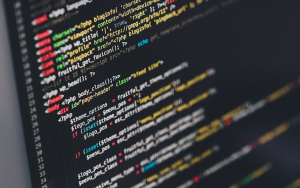
Demystifying the Research Process
So, you’re intrigued by research? Great! You’ve landed on the right page. In a world overflowing with information, understanding how to approach research—how to find reliable data and make meaningful conclusions—is vital. This isn’t just about filling out surveys; it’s about diving deep into understanding real-world problems, uncovering hidden patterns, and ultimately making a difference.
Why Research Methods Matter
Think of research methods as your toolkit for tackling any question you have. They guide you through the entire process: from defining your problem, to gathering data, analyzing results, and drawing meaningful conclusions. Without them, you’re essentially throwing darts in the dark—more than likely missing the bullseye!
Why is this so important? Because research methods ensure that:
* **Your investigation is grounded in evidence:** Instead of relying on opinions or assumptions, methods provide a framework for collecting and analyzing data relevant to the specific problem you’re addressing.
* **You can test your theories:** Research allows you to prove or disprove what you already know, which helps refine your understanding and ultimately leads to better solutions.
* **Your findings are credible:** Well-structured research methods ensure that the conclusions drawn from data analysis are accurate and reliable, fostering trustworthiness in your work.
The Research Process: Step by Step
Let’s break down the process of conducting research. It might seem daunting at first, but with a clear understanding, it becomes manageable:
1. **Define Your Research Question:** This is about being specific and focused! What exactly are you trying to understand? What problem are you looking to solve?
2. **Develop Your Research Design:** This stage involves deciding on the type of research you’ll conduct, such as experimental, observational, or correlational. Consider your resources, time constraints, and the complexity of your question.
3. **Gather Data:** How will you collect information? Will you use surveys, interviews, archival records, or something else entirely? The choice depends on your research question and available resources
4. **Analyze Your Data:** This is where the magic happens! You need to identify patterns, analyze trends, and draw conclusions. Consider using statistical tools where necessary.
5. **Interpret and Communicate Your Findings:** Present your findings in a clear, concise, and engaging manner! Use graphs, charts, and other visuals to illustrate your results. Explain your conclusions clearly, considering the limitations of your study and potential areas for future research.
Case Study: Researching Childhood Obesity
Imagine you want to understand why childhood obesity is on the rise. You could conduct a study using a combination of methods:
* **Quantitative Research:** Use questionnaires to survey children, parents, and educators about their diet, activity levels, and understanding of healthy living habits. This would help quantify behaviors and provide insights into potential risk factors.
* **Qualitative Research:** Hold focus groups or conduct interviews with parents and children to understand their perspectives on the issue, exploring potential barriers and motivations. This way you can gather deeper insights beyond just quantifying data
Tools of the Trade: Essential Methods
Let’s delve into some common research methods used by researchers in various fields:
* **Surveys:** A quick, efficient way to gather information from a large group. Use multiple-choice questions and open-ended questions to gain insights into respondents’ opinions and experiences.
* **Interviews:** A more personal approach for gathering in-depth information about individuals’ perspectives and experiences. These provide rich qualitative data, allowing you to understand motivations, feelings, and attitudes
* **Experiments:** A controlled method that allows for cause-and-effect analysis. You manipulate a specific variable to see if it affects a particular outcome, helping you draw more reliable conclusions.
* **Observational Research:** Observe behavior in natural settings without interfering. This can provide valuable insights into real-world situations and how people interact with their environment.
The Future of Research Methods
Research methods are constantly evolving, driven by advances in technology and new research questions! Here’s a glimpse into the future:
* **Big Data:** Harnessing massive datasets to uncover hidden trends and patterns. This could lead to more accurate predictions and personalized solutions.
* **Artificial Intelligence (AI):** AI can assist in analyzing large datasets, identifying patterns, and generating insights that would be challenging for human researchers.
* **Virtual Reality (VR) & Augmented Reality (AR):** Immersive experiences could revolutionize research methods by creating realistic simulations of environments or allowing for controlled testing of ideas.
Conclusion
Research methods are like puzzle pieces that fit together to form a complete picture of the world around us. By understanding these methods and their applications, you can embark on your own exploration into the ever-evolving tapestry of knowledge. Remember, research is not just about data; it’s also about curiosity, passion, and a desire to understand the world in a deeper way.


